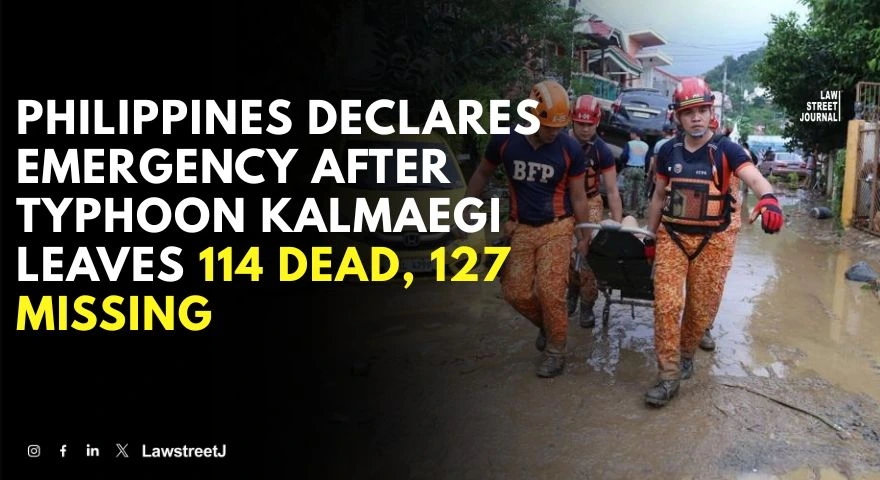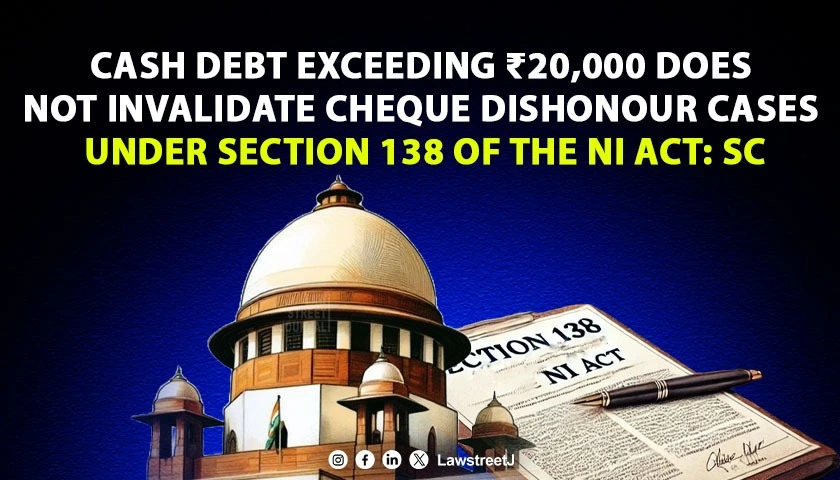New Delhi: The Philippine government has imposed a nationwide state of emergency as the country reels from the destruction caused by Typhoon Kalmaegi. The storm, which struck earlier this week, has left at least 114 people dead and 127 missing, making it the deadliest disaster to hit the Philippines in 2025. Kalmaegi made landfall on November 3, slamming into the central part of the country with powerful winds and relentless rain. Floodwaters rose within hours, sweeping through low-lying areas and cutting off roads and bridges.
Figures from the Office of Civil Defence (OCD) show that most fatalities were recorded in Cebu, where flash floods and landslides struck without warning. At least 127 residents remain unaccounted for, and search operations continue under difficult conditions. Authorities estimate that nearly two million people have been affected. More than 560,000 residents were forced to flee their homes, and roughly 450,000 evacuees are now housed in temporary shelters.
The National Disaster Risk Reduction and Management Council (NDRRMC) reported extensive destruction of homes, farms, and public buildings in Negros Oriental, Cebu, and Leyte. Entire villages have been left without power or clean water. Several local governments, including those in Cebu, declared states of calamity — a move permitted under Republic Act No. 10121, also known as the Philippine Disaster Risk Reduction and Management Act of 2010. The declaration allows local authorities to use emergency funds immediately, bypass procurement delays, and enforce price controls on essential goods.
President Marcos Declares National State of Emergency
On November 6, President Ferdinand Marcos Jr. issued a proclamation declaring a national state of emergency. The order activates legal mechanisms under the Constitution and Republic Act No. 10121 to mobilize all available government resources for relief and recovery.
The Department of Budget and Management (DBM) has released Quick Response Funds (QRF) to key agencies such as the Department of Social Welfare and Development (DSWD), Department of Public Works and Highways (DPWH), and Department of Health (DOH). The funds will be used to provide food, medicines, temporary housing, and to repair damaged infrastructure.
The Department of Justice (DOJ) has circulated guidelines reminding public officials to observe procurement laws, while the Commission on Audit (COA) has deployed teams for real-time auditing of all emergency expenditures. The Department of the Interior and Local Government (DILG) has ordered local authorities to submit damage assessments within 72 hours to help coordinate the national response.
Military and police units have been mobilized to assist in rescue efforts, debris clearing, and the distribution of relief goods. In several areas, helicopters from the Armed Forces of the Philippines (AFP) are airlifting supplies to isolated communities.
After leaving the Philippine archipelago on November 5, Kalmaegi strengthened over the South China Sea, moving westward toward central Vietnam, according to forecasts from PAGASA and the Joint Typhoon Warning Center (JTWC). Weather agencies have issued warnings that the storm may cause further flooding in Southeast Asia.
International and Regional Response
The United Nations Office for the Coordination of Humanitarian Affairs (UNOCHA) has placed the Philippines under Level 2 Emergency Watch, activating international humanitarian monitoring and the possible deployment of aid teams. The ASEAN Coordinating Centre for Humanitarian Assistance (AHA Centre) has initiated regional coordination for potential cross-border support.
Meanwhile, the Department of Foreign Affairs (DFA) has issued travel advisories for affected regions and coordinated with foreign embassies to assist nationals stranded by the storm. The Bureau of Immigration (BI) has temporarily suspended visa processing in damaged areas to allow staff and resources to focus on relief work.
Legal and Economic Framework of Response
Early estimates point to severe economic losses across agriculture, fisheries, and local trade. The Department of Agriculture (DA) and Department of Trade and Industry (DTI) have begun evaluating supply disruptions and rehabilitation plans for affected producers.
Legal experts note that under Section 16 of Republic Act 10121, the President’s declaration authorizes direct use of national calamity funds and temporary relaxation of procurement rules to expedite aid delivery. The government has assured that these funds will remain under audit oversight to prevent misuse.
The Department of Finance (DOF) is preparing measures to support post-disaster recovery, including possible use of emergency reserves and insurance coverage for public assets. The Bangko Sentral ng Pilipinas (BSP) has stated that it will monitor market conditions for inflationary risks caused by food and fuel shortages.
As search and rescue operations continue, thousands of families remain in evacuation centers waiting for assistance. Relief teams are working to restore communication lines and access to remote villages. With 114 confirmed deaths, 127 still missing, and millions affected, Kalmaegi has tested the country’s disaster response systems once again.
The nationwide state of emergency enables government agencies to act swiftly under existing law while maintaining transparency and coordination. International aid agencies remain on standby as the storm moves toward Vietnam, where regional authorities have begun issuing their own evacuation orders.







